Last night marked the eve of Yom Kippur, the holiest day of the Jewish year, in which we ask G-d for forgiveness for all the lousy things we did last year while starving ourselves and also remembering everybody who died! It’s not very fun, but it’s important.
Last week for Rosh Hashannah I made you a list of some influential LGBTQ Jewish people who are doing cool things in the world and this week for Yom Kippur we’re going in a different, more Yizkor-ready direction. Like they say, “As long as we live, they too will live; for they are now are a part of us; as we remember them.”
These are some influential Jews who are no longer with us. Like last week, it’s not a “best of” or “most important” list, it’s just a list-list. The inclusion of anybody on this list does not indicate an endorsement of or allegiance to their politics or beliefs.
Amy Levy (1861 – 1889) // Essayist, Poet & Novelist

The first Jewish woman at Cambridge University, bisexual writer Amy Levy was born into a reform Jewish family in an affluent section of London. She was affiliated with the “New Woman” ideal, a feminist concept used to describe independent, active intellectual woman who pushed limits of male-dominated societies. She wrote a series of essays on Jewish culture and literature for The Jewish Chronicle and her second novel, Reuben Sachs, was written to fill a literary need for “serious treatment… of the complex problem of Jewish life and Jewish character.” In her work she challenged the Jewish community’s expectations of women and expressed a strong cultural tie to Judaism. The love of her life was writer/theorist Vernon Lee, who also wrote about “sapphic love.” When she committed suicide after a lifelong struggle with depression, Oscar Wilde wrote her obituary in “Women’s World.”
Emma Goldman (1869 – 1940) // Activist & Writer
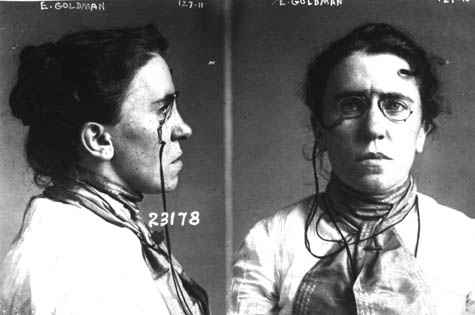
Goldman, a controversial figure who played a pivotal role in the development of anarchist political philosophy, spent a lot of time in prison, including an arrest for distributing information about birth control. Despite being “hostile to religion in general,” the JWA writes that “she understood that her own ideals had their roots in a Jewish historical experience shaped by longstanding oppression.”
Gertrude Stein (1874 – 1946) & Alice B. Toklas (1877 – 1967) // Writers & Salon Hosts

I don’t have to tell you who these ladies are, I believe you are familiar with their work and lives! Although half of German Jews were trapped in the country in 1938 and nearly all of them were murdered, Stein and Toklas were in France at the time, and survived World War II, like three-fourths of the French-Jewish population, with the help of friends and local officials who quietly resisted German orders. Apparently, there has been an extensive and well-documented witch hunt / ahistorical account of sorts surrounding Stein surviving WWII due to her friendship with a fascist Nazi collaborator and you can read the story on that here. (I’m not an expert on this situation by any means.)
Sophia Parnok (1885 – 1933) // Poet & Journalist

Born into an educated family with a Jewish pharmacist father, “Russia’s Sappho” departed from poetic styles of the time with verses that addressed her unique background as a Russian Jewish Lesbian with Grave’s Disease. Her five successive girlfriends, including poet Marina Tsvetaeva, inspired five collections of poetry and several librettos for opera.
Salka Viertel (1889 – 1978) // Actress, Writer & Salon Host

Viertel, born in Galicia (then part of Austria-Hungary, now Poland/Ukraine), was a successful actress and writer who left Berlin for the US in 1928 with her husband and three children to work in Hollywood. In Los Angeles, Salka got real close to Greta Garbo and co-wrote the script for Queen Christina. The Salka and Berthold Viertel House in Santa Monica became a meeting place for the German intellectual emigre community, including Garbo, Albert Einstein, and Aldous Huxley. “Unlike most Americans of the time, Viertel harbored no illusions about the National Socialist epidemic spreading throughout Europe,” writes The Los Angeles Times. “She quickly turned her house into a haven for hundreds of Jews and anti-Fascists who fled, footsteps ahead of the Nazis, and found themselves, homeless and traumatized, on the shores of the Pacific.” Her home was featured in the 2005 Jewish Museum exhibit inspired by Bilski and Braun’s book The Power of Conversation: Jewish Women and Their Salons.
Lucy Renee Mathilde Schwob aka Claude Cahun (1894 – 1954) // Artist & Salon Host
Note: Although the headline of this post indicates this is a list of “women,” it’s unclear to historians how Claude would’ve identified, gender-wise, in the contemporary era.
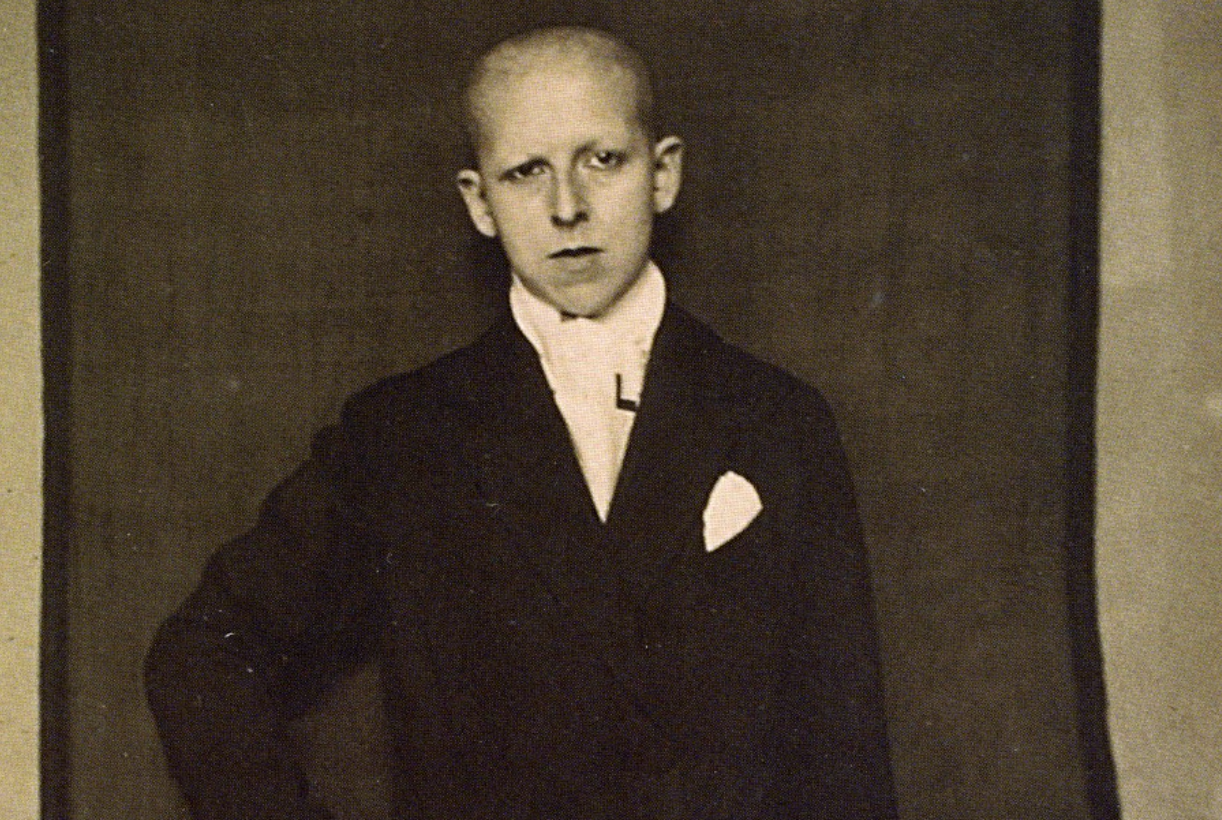
Cahun, one of the few women actively engaged with ’20s/’30s surrealist artists in Paris, was born into a prominent intellectual Jewish family and attended a private high school in Surrey ’cause she couldn’t handle the anti-Semitism at her local high school. Cahun’s mother, a gentile, was institutionalized when she was a child, and she was raised by her Jewish grandmother, Mathilde Cahun. She started her first self-portraits at the age of 18.
She changed her name to Claude Cahun, establishing a salon in Paris with her romantic and creative partner, Suzanne Malherbe, aka Marcel Moore. Her art played with traditional concepts of gender and identity, and historians haven’t landed on how to separate her life from her art when it comes to her own gender identity. She once wrote, “Shuffle the cards. Masculine? Feminine? It depends on the situation. Neuter is the only gender that always suits me.” We might refer to her as “non-binary” or “genderqueer” today, but it’s hard to say how anybody would’ve identified gender-wise retroactively, especially in a context like Claude’s.
Claude and Marcel left France for the Isle of Jersey in 1937, feeling France unsafe for a Jewish lesbian, but by 1940 the Germans had occupied Jersey as well. So Marcel and Claude “collaborated on a relentless campaign of resistance,” publishing anti-Nazi propaganda, translating illegal BBC broadcasts and turning snippets into published rhymed couplets with accompanied illustrations. They impersonated German officers while writing, and donned disguises to infiltrate German gatherings and outposts to deliver their materials. They were arrested, tried, and sentenced to death for “undermining German forces,” but the executions were never carried out and they were released when the war ended in 1945.
Vera Lachmann (1904 – 1985) // Poet, Classicist & Educator

In 1933 Lachmann founded a private school for children of Jewish and Jewish-Christian parents who’d been expelled from public school in the early days of Adolf Hitler’s reign, but Nazi officers shut it down in 1938. She fled Germany for the U.S. in 1939, where she taught at a number of Universities including Yale and Bryn Mawr, published poetry, and launched Camp Catawba, a summer camp for boys. She spent her life with Catawba’s music instructor, composer Tui St. George Tucker, who died in 2004.
Muriel Rukeyser (1913 – 1980) // Poet & Activist 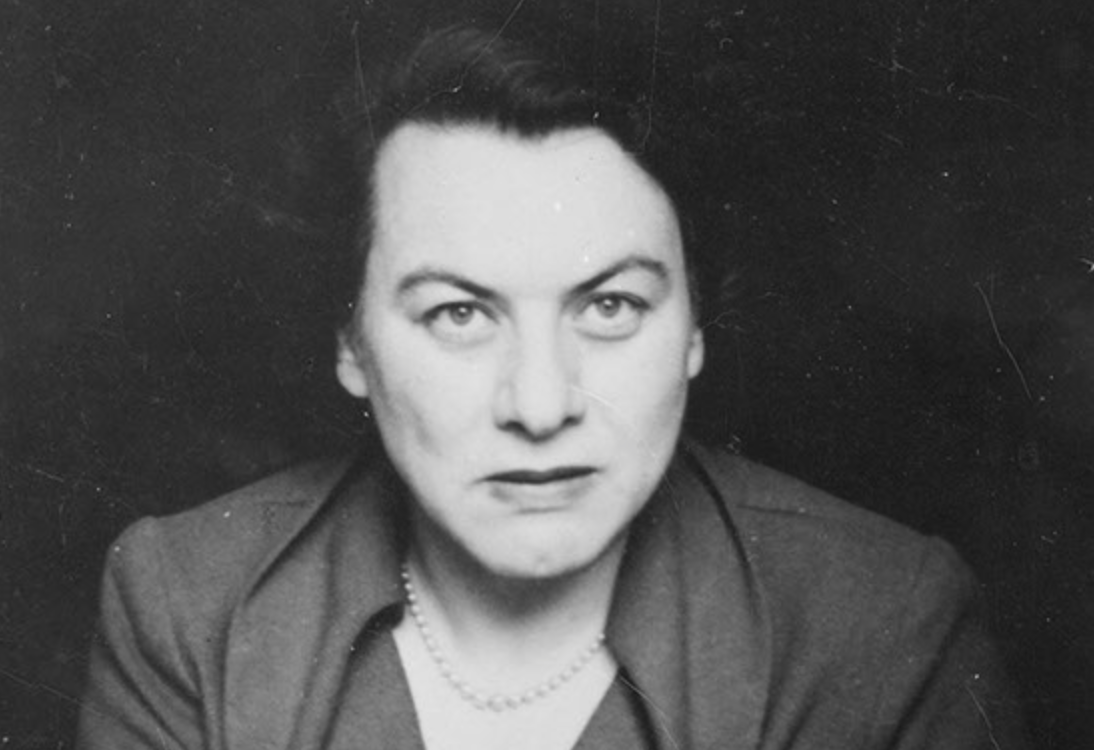
One of bisexual poet, feminist and social justice warrior Muriel Rukeyser’s most well-known works, 1944’s ‘”To be a Jew in the Twentieth Century,” was adopted by American Reform and Reconstructionist Jews for usage in prayer books. But you most likely know her from two legendary lines she wrote in a 1968 poem named for and regarding the German artist “Käthe Kollwitz” — what would happen if one woman told the truth about her life? The world would split open. (We actually used a piece of that quote in an essay title back in 2009, and I first became aware of it in college when reading Jewish historian/journalist/professor Ruth Rosen’s book on the feminist movement, The World Split Open.)
Rukeyser, who published extensively and won piles of awards, grew up in New York in a middle-class Jewish family. She began writing poems because her house was so damn quiet. Her entry in the Jewish Women’s Encyclopedia notes, “Like life in her home, the Jews of Rukeyser’s parents’ generation were silent, refusing to be involved in “suffering that demanded resistance.” For Rukeyser, the life-style of the Jews was in contradiction with the message of the Bible, with its “clash and poetry and nakedness, its fiery vision of conflict resolved only in God.”
Jane Bowles (1917 – 1973) // Writer & Playwright
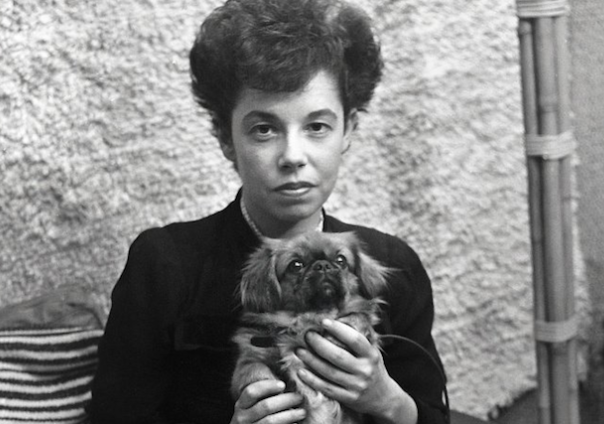
Bowles’ middle-class secular Hungarian-German-Jewish family sought to assimilate into mainstream American culture, as many Jews did at the time, but her conversations and writing were infused with Yiddish words and other Jewish ideas. “Jane never denied that she was Jewish, but perhaps she proclaimed it more openly after the war,” writes Millicent Dillon in “A Little Original Sin — The Life and Work of Jane Bowles.”Then in her most bitter self-derision, which was at the same time self-mocking humor, she called herself, ‘Crippie, the Kike Dyke.’” Emma Morris cites themes of displacement and “an insidious undercurrent of Jewish self-hatred in her work and life” as essential Bowles. She married fellow composer-writer Paul Bowles, whose father was anti-Semetic and furious about their union, and the two had an open marriage. They were both bisexual and at the center of an avant-garde circle of writers and intellectuals.
Felice Rahel Schragenheim (1922 – 1944) // Journalist & Resistance Fighter

The 1999 film Aimee & Jaguar is an adaptation of a book by the same name, which tells the story of Schragenheim and Lily Wurst, two women who fell in love during World War II, although Schragenheim was a lesbian Jew surviving under a false identity and Wurst was married to a German SS Officer. Schragenheim was initially sent to KZ Auschwitz Birkenau in 1944 and it is believed that she died while on a death march to either KZ Groß-Rosen or KZ Bergen-Belsen.
Anne Frank (1929 – 1945)

Much of Frank’s famous diaries were edited by her father, Otto, before publication, and it’s possible those edits are part of what enabled the diary to reach so many classrooms. In an edition of the Diary without those specific edits, we discover that Frank wrote:
“Once when I was spending the night at Jacque’s, I could no longer restrain my curiosity about her body, which she’d always hidden from me and which I’d never seen. I asked her whether, as proof of our friendship, we could touch each other’s breasts. Jacque refused. I also had a terrible desire to kiss her, which I did. Every time I see a female nude, such as the Venus in my art history book, I go into ecstasy. Sometimes I find them so exquisite I have to struggle to hold back my tears. If only I had a girlfriend!”
Edie Windsor (1929 – 2017) // Activist & Technology Manager
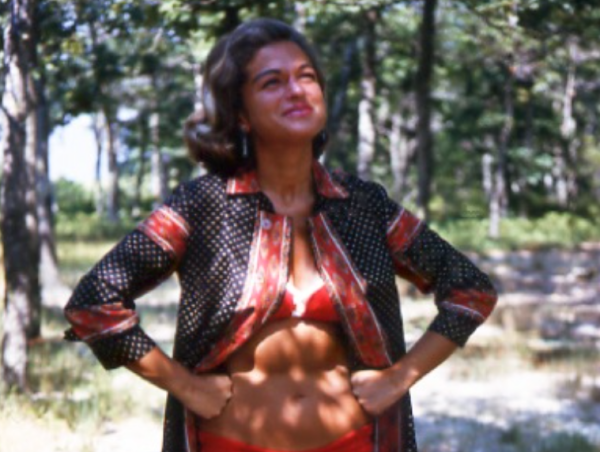
In 2013, following Windsor’s historic Supreme Court win that overturned DOMA, over 600 worshippers lined up outside Congregation Beit Simchat Torah in Manhattan, eager to celebrate gay pride weekend with Windsor and her lawyer, fellow Jewish lesbian Roberta Kaplan. Windsor was greeted by a standing ovation, services were extended to include the Hallel prayer, the night was dedicated to Windsor’s deceased ex Thea Spayer (also Jewish), and both Kaplan and Windsor spoke at the end of the service. The central bodies of every major Jewish denomination except Orthodoxy filed briefs in favor of her case to the Supreme Court. Windsor was the daughter of Jewish immigrants from Russia and grew up in Philadelphia.
Adrienne Rich (1929 – 2012) // Writer & Activist

Rich published “Split at the Root: An Essay on Jewish Identity” in 1982, about her experience growing up with a gentile mother and Jewish father during World War II, encouraged to obscure her Jewish heritage. In her poem “Yom Kippur 1984” she asked “What is a Jew in solitude? / What would it mean not to feel lonely or afraid / far from your own or those you have called your own?” In 2003’s “Jewish Days and Nights,” she wrote, “Every day in my life is a Jewish day. Muted in my house of origin, Jewishness had a way of pressing up through the fissures.”
She ends “Split at the Root” with this:
This essay, then, has no conclusions: it is another beginning for me. Not just a way of saying, in 1982 Right Wing America, I , too, will wear the yellow star. It’s a moving into accountability, enlarging the range of accountability. I know that in the rest of my life, the next half century or so, every aspect of my identity will have to be engaged. The middle-class white girl taught to trade obedience for privilege. The Jewish lesbian raised to be a heterosexual gentile. The woman who first heard oppression named and analyzed in the Black Civil Rights struggle. The woman with three sons, the feminist who hates male violence. The woman limping with a cane, the woman who has stopped bleeding are also accountable. The poet who knows that beautiful language can lie, that the oppressor’s language sometimes sounds beautiful. The woman trying, as part of her resistance, to clean up her act
Susan Sontag (1933 – 2004) // Writer, Human Rights Activist, Public Intellectual

Sontag is another woman on this list who you’re likely familiar with and her bio could last a million years. She’s published multiple novels, short stories, plays, films and works of non-fiction. In 1964 she wrote the enormously influential “On Camp.” She wrote for every newspaper and magazine and literary publication worth writing for. She was a tireless activist. She dated Annie Leibovitz. Upon being named the Jerusalem prize laureate in 2001, Sontag accepted her award with a speech made “in homage to all the writers and readers in Israel and Palestine struggling to create literature made of singular voices and the multiplicity of truth,” which led right-wing pundits to declare her a “self-hating Jew” for criticizing Israel. Another classic Sontag quote: “The two pioneering forces of modern sensibility are Jewish moral seriousness and homosexual aestheticism and irony.”
Kathy Acker (1944 – 1997) // Experimental Novelist, Punk Poet, Playwright, Essayist, Postmodernist & Sex-Positive Feminist Writer

Raised in a wealthy German-Jewish family, bisexual writer Acker “spent her youth negotiating New York’s complex Jewish immigrant hierarchies.” Sarah Schulman writes that Acker’s family was thus part of “the kind of German Jew that is known by real New Yorkers as “Our Crowd” — her family, the Alexanders, along with the Lehmans, Loebs, Ochs, etc., were the best educated, wealthiest and most sophisticated Jews of the world.” She met her first husband at Brandeis but quickly escaped tradition for a life in the punk counterculture of the 1970s/1980s in New York, London, San Francisco and San Diego. In “Kathy Acker: Wandering Jew,” Ellen G. Friedman writes that Acker “both personally and as a writer engaged in intellectual, georgraphical, and emotional quests — a romantic, restless Jewish wanderer never at home, but in the seeking of home keeps the idea alive in its most expansive and utopian sense.” The last book she’d asked a friend to bring to her at the cancer clinic where she died was Kabbalah, by Gershom Scholem.
Lesley Gore (1946 – 2015) // Singer-Songwriter, Actress and Activist
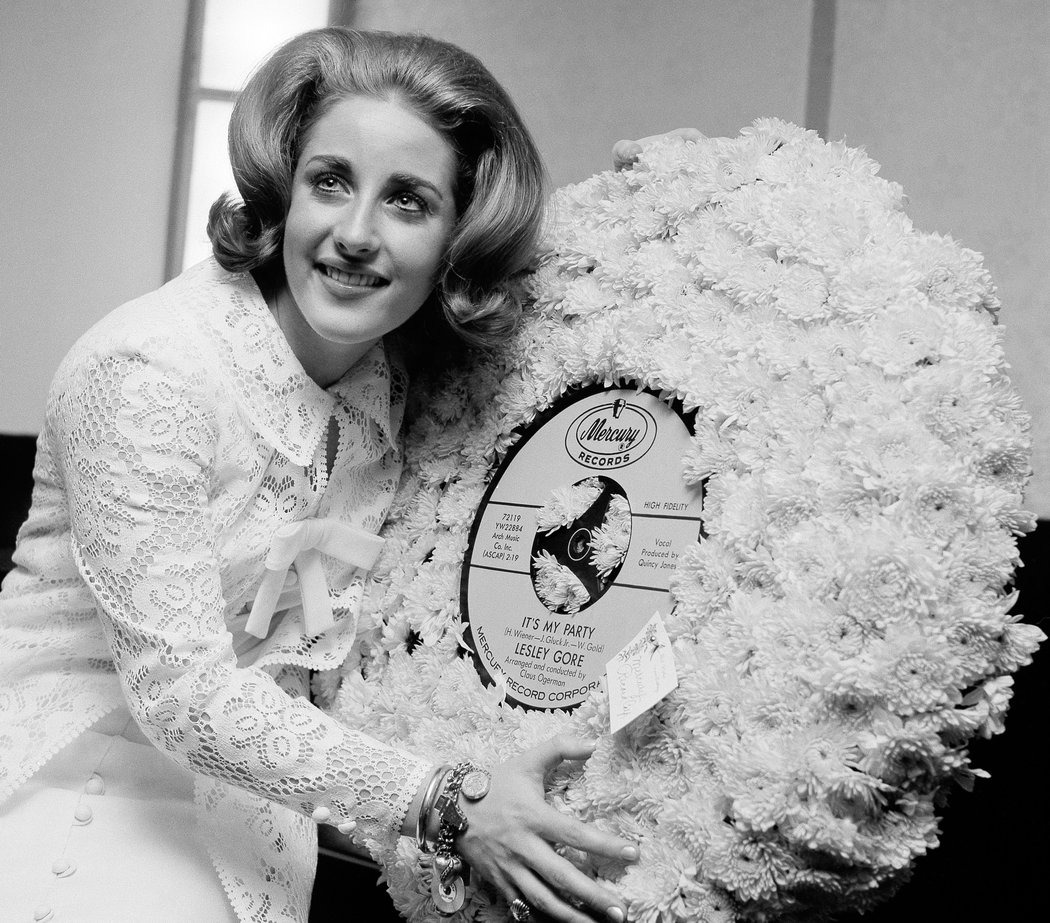
Born Leslie Sue Goldstein in Brooklyn, New York, this Jewish songstress is best known for feminist anthem “You Don’t Own Me” and teeny-bop hit “It’s My Party.”
Here’s a hot piece of trivia for you: “It’s My Party” has Jewish roots — originally recorded by a British Jewish performer, Helen Shapiro, and the concept of “I sing about tsoris while everybody has fun around me” goes back farther, to French-Russian Jewish songwriter Michel Emer’s “Bal dans ma rue / party in my street,” performed iin 1949 by Edith Piaf.
Gore hosted an LBGT-oriented public television program starting in 2004, and told AfterEllen that she’d been dating luxury jewelry designer Lois Sasson since 1982 and was lesbian-identified. They were still together at the time of her death in 2015.
Brenda Howard (1946 – 2005) // Bisexual Rights Activist

Howard is known as “the mother of Pride” for coordinating the Christopher Street Liberation Day March to commemorate the one-year anniversary of Stonewall, which became what we now know as Pride. Howard grew up Jewish outside of New York City and as an adult, identified as a Reconstructionist and worshipped at New York’s Congregation Beit Simchat Torah. She was an active member of the Gay Liberation Movement, helped found the New York Area Bisexual Network, was a regional organizer for BiNet USA, a co-faciliator of the Bisexual S/M Discussion Group, the female co-chiar of the March on Washington’s leather contingent and a founder of the first-ever Alcoholics Anonymous chapter for bisexuals.
Deborah Friedman (1951 – 2011) // Singer-Songwriter
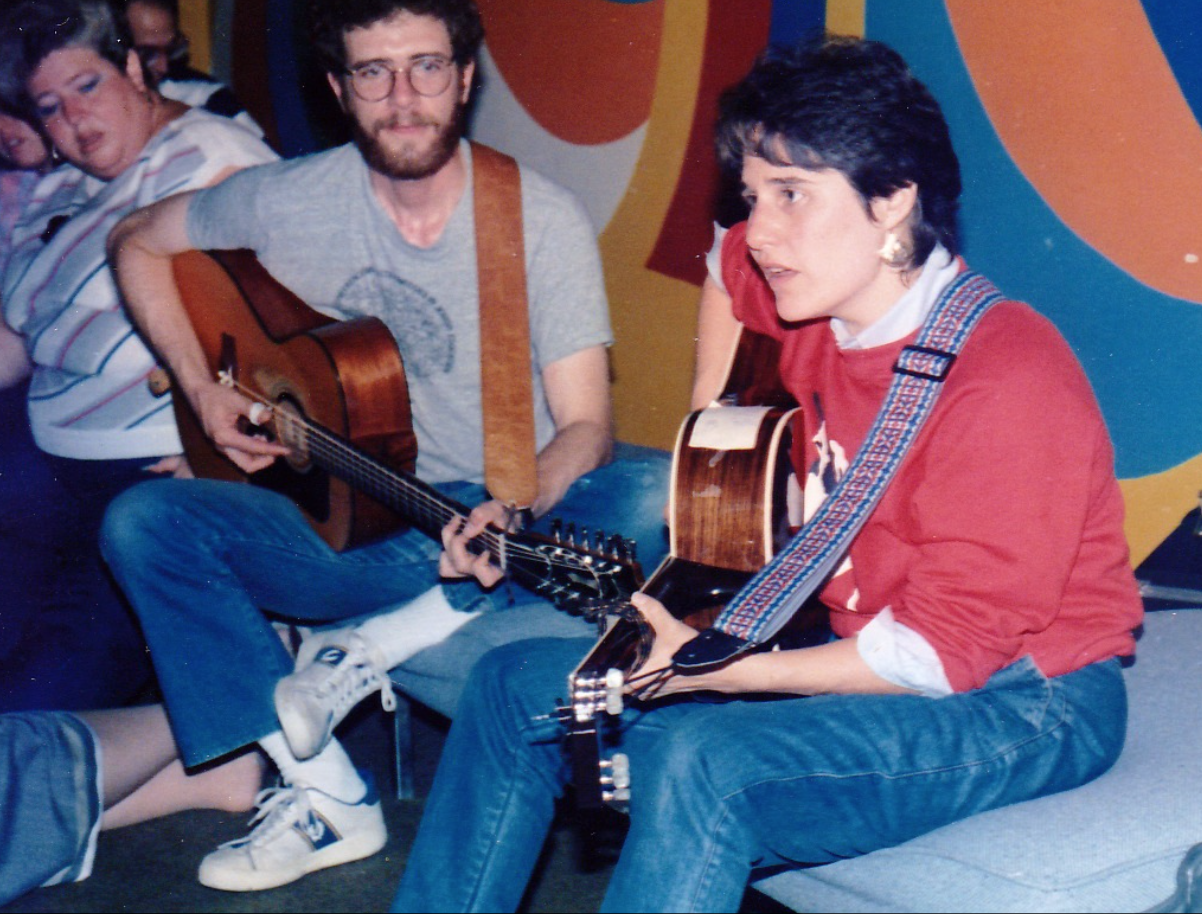
Named “the Joan Baez of Jewish song” by The Forward in 1995, you’ve likely heard her setting of “Mi Shebeirach” and/or gotten “The Aleph Bet Song” stuck in your head for centuries. In an article about her sexual orientation published after her death, Jonathan Mark wrote that Debbie Friedman,” who was raised Orthodox, “almost single-handedly introduced intimate God-talk into modern Reform Judaism” and The New York Times wrote that her work “is credited with helping give ancient liturgy broad appeal to late 20th-century worshippers.”
Some Tzedakah ideas for today:
- Consumer Reports: How You Can Help Hurricane Victims in Puerto Rico
- Lifehacker: How to Help Puerto Rico Recover from Hurricane maria — and Get the U.S. Government to Do the Same
- Relief Fund for Centro Comunitario LGBTT De Puerto Rico
Please note that we are not qualified for and do not have the time to host or moderate a safe and constructive debate or conversation regarding Zionism and/or the Israel/Palestine conflict in the Autostraddle comments, an issue that is often raised by readers on posts relating to Judaism. All comments attempting to initiate said debate from any standpoint, or any comments equating Judaism with Zionism, will be deleted.







